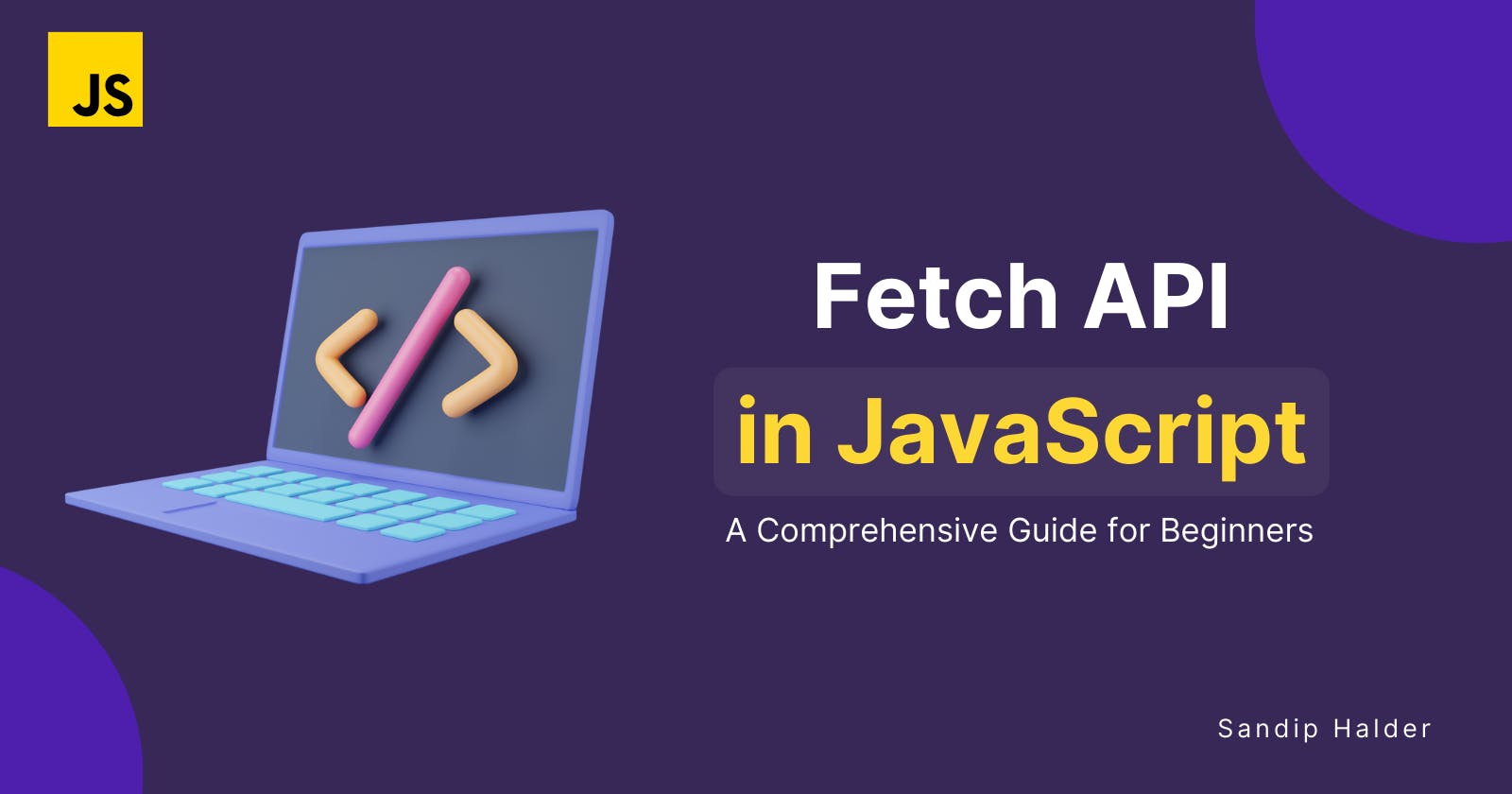Fetch API
The Fetch API is a modern interface that allows you to make HTTP requests to servers from web browsers.
The fetch API can perform all the tasks that the XMLHttpRequest (XHR) object does.
The fetch API is much simpler and cleaner.
It uses the promise to deliver a more flexible feature to make requests to servers from web browsers.
Sending a request
The fetch() method is available in the global scope and instructs web browsers to send a request to a URL.
The fetch() method requires only one parameter, which is the URL of the resource that you want to fetch.
When the request is complete, the promise will resolve into a response object.
let response = fetch(url);
Reading the response
The fetch() method returns a promise, so you can use the then() and catch() methods to handle it.
fetch(url)
.then((response) => {
//handle the response
})
.catch((error) => {
//handle the error
});
- If the contents of the response are in raw text format, you can use the text() method.
The text() method returns a promise that resolves with the complete contents of the fetched resources.
fetch('/readme.txt')
.then(response => response.text())
.then(data => console.log(data));
Besides the text() method, the response object has other methods such as json(), blob(), formData(), and arrayBuffer() to handle the respective type of data.
In practice, you often use async/await with the fetch() method like this:
async function fetchText() {
let response = await fetch('/readme.txt');
let data = await response.text();
console.log(data);
}
Handling the status codes
The response object provides the status code and status text via the status and statustext properties.
async function fetchText() {
let response = await fetch('/reademe.txt');
console.log(response.status); //200
console.log(response.statusText); //OK
if(response.status == 200) {
let data = await response.text(); // handle the data
}
}
fetchText();
